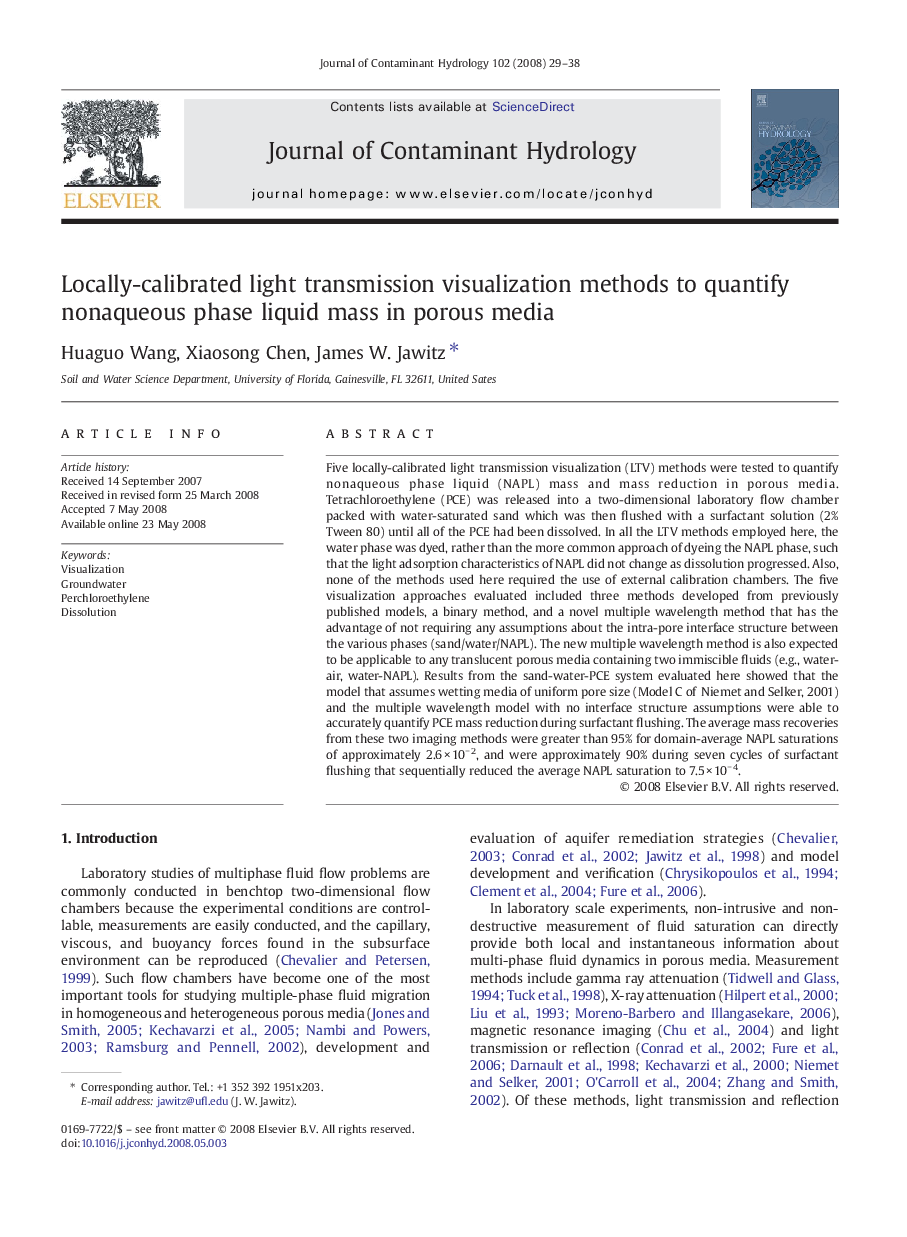| Article ID | Journal | Published Year | Pages | File Type |
|---|---|---|---|---|
| 4547361 | Journal of Contaminant Hydrology | 2008 | 10 Pages |
Five locally-calibrated light transmission visualization (LTV) methods were tested to quantify nonaqueous phase liquid (NAPL) mass and mass reduction in porous media. Tetrachloroethylene (PCE) was released into a two-dimensional laboratory flow chamber packed with water-saturated sand which was then flushed with a surfactant solution (2% Tween 80) until all of the PCE had been dissolved. In all the LTV methods employed here, the water phase was dyed, rather than the more common approach of dyeing the NAPL phase, such that the light adsorption characteristics of NAPL did not change as dissolution progressed. Also, none of the methods used here required the use of external calibration chambers. The five visualization approaches evaluated included three methods developed from previously published models, a binary method, and a novel multiple wavelength method that has the advantage of not requiring any assumptions about the intra-pore interface structure between the various phases (sand/water/NAPL). The new multiple wavelength method is also expected to be applicable to any translucent porous media containing two immiscible fluids (e.g., water-air, water-NAPL). Results from the sand-water-PCE system evaluated here showed that the model that assumes wetting media of uniform pore size (Model C of Niemet and Selker, 2001) and the multiple wavelength model with no interface structure assumptions were able to accurately quantify PCE mass reduction during surfactant flushing. The average mass recoveries from these two imaging methods were greater than 95% for domain-average NAPL saturations of approximately 2.6 × 10− 2, and were approximately 90% during seven cycles of surfactant flushing that sequentially reduced the average NAPL saturation to 7.5 × 10− 4.
